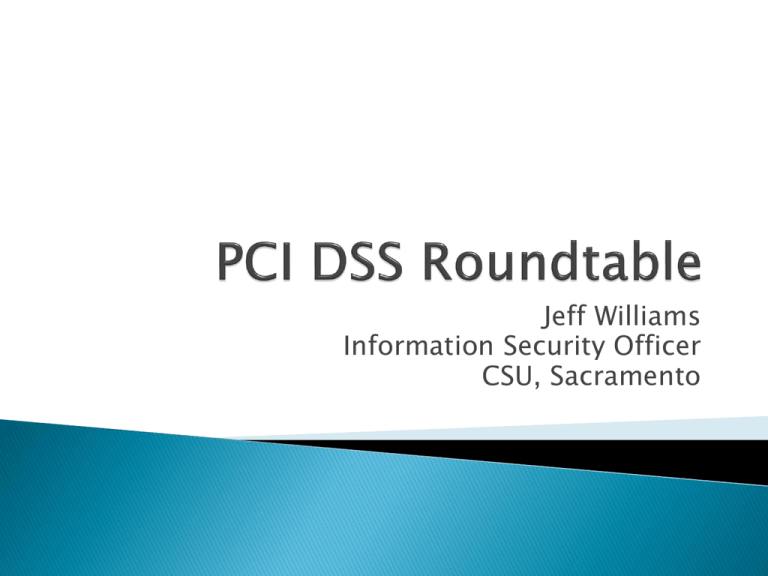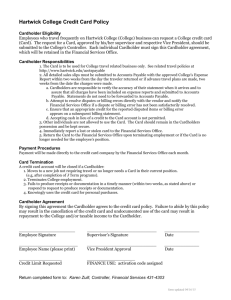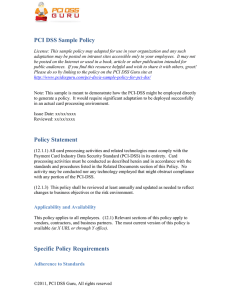PCI Roundtable
advertisement

Jeff Williams Information Security Officer CSU, Sacramento What is PCI DSS? What are the financial impacts? What are the requirements? How do I become compliant? • • • Standard that is applied to: – Merchants (You) – Service Providers (Third Third-party vendor, gateways) – Systems (Hardware, software) That: – Stores cardholder data – Transmits cardholder data – Processes cardholder data Applies to: – Electronic Transactions – Paper Transactions Forced service outage during incidents Forced service suspension Loss of brand processing Fines as high as $5,000 per card per day Pay for independent investigation (entry fee of ~$30,000) ◦ Fines up to $500,000 ◦ Large breaches… ◦ ◦ ◦ ◦ ◦ $50,000,000 $590,000 $10,000,000 Combined fines for all three $60,590,000 Consider highest total cards processed in one day (disclaimer, numbers picked for easy math, optimistic and assume pre-incident self-assessment and mitigation) 100 total cards $50 per card for notification/communication $100 fine per card $30,000 investigation fee Single Loss Expectancy $45,000 Annualized Rate of Occurrence .10 Annualized Loss Expectancy $4,500 Consider highest total cards processed in one day (disclaimer, numbers picked for easy math, optimistic and assume little to no self-assessment and mitigation activities) 100 total cards $50 per card for notification/communication $1,000 fine per card $30,000 investigation fee Single Loss Expectancy $180,000 Annualized Rate of Occurrence .20 Annualized Loss Expectancy $36,000 Consider ◦ Your highest number of cards processed day ◦ A multi-day event ◦ You are out of compliance and store all cards processed ◦ Maximum fines ◦ Impact to your reputation/fundraising ◦ Impact to your operations Build and Maintain a Secure Network 1. Use firewalls and NAT to protect data 2. Do not use vendor-supplied defaults for system passwords and other security parameters Protect Cardholder Data 3. Protect physical stored data 4. Encrypt transmission of cardholder data and sensitive information across public networks Maintain a Vulnerability Management Program 5. Use and regularly update antivirus software 6. Develop and maintain secure systems and applications Implement Strong Access Control Measures 7. Restrict access to data by business need-to-know 8. Assign a unique ID to each person 9. Restrict physical access to cardholder data Regularly Monitor and Test Networks 10. Track and monitor all access to network resources and cardholder data 11. Routinely test security systems and processes Maintain an Information Security Policy 12. Establish high-level security principles and procedures It all starts with a Self Assessment Identify and close your gaps http://www.csus.edu/irt/is/pci/presentations/index. html Bottom of the webpage has a matrix of examples, guides, resources and templates PCI Website - www.pcisecuritystandards.org Thank you, Jeff Williams jeff.williams@csus.edu 916.278.7733






